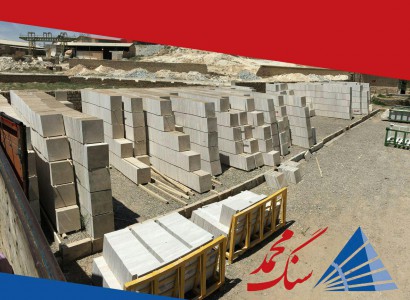The first stone mill in Iran
The first stone mill in Iran was established in 1317 by Astan Quds Razavi in Mashhad.
This stone building was built in Germany and was installed by German experts in Iran and launched in 1318.

The first stone mill in Iran was established in 1317 by Astan Quds Razavi in Mashhad.
This stone building was built in Germany and was installed by German experts in Iran and launched in 1318.

Which stone should be used for flooring? Basically, what marble rocks are better for any part of the building? What kind of marble must be used for crowded and crowded places? And in general, which of Iran's gems is suitable for working on the floor of modern and classical structures? In many cases, respectable stone consumers do not get enough information to choose the stone. In this section, we try to talk about the types of marble stone and provide more details about the analysis of these stones and valuable to stone buyers and sellers.
In the first question, we briefly mention only its titles:
Stone porosity is low.
Abrasion resistance and high impact resistance.
Absorb low water.
It has a good thickness.
But in the second question, "the marble rocks are suitable for work in which part of the building are suitable"
We first consider different building locations:
Exterior view with high altitude
Low altitude exterior view
Interior view of parking
Interior interior of the rooms
Floor of the building (parking lots and rooms)
With regard to the above categories, we will examine the properties of each location:
Usually, the exterior of the building is exposed to direct sunlight and seasonal and acid rain (in large and industrial cities), and sometimes severe winds. With the above information, we include rock characteristics:
Stone for exterior use should be:
It is resistant to rain, which means that in the event of rain falling, the elements of the rock do not combine with water and do not eliminate sands and stones, this problem is more likely to be found on rocks with high porosity and high percentage of lime, which can be a large category of The marble is considered as one of these types of rocks. (Of course, it is not forgotten that all sedimentary rocks have significant amounts of lime but the composition of various elements and metals in them determines their resistance and their composition with water)
The rocks that are installed at the height should be of proper porosity, so that the mortar and slurry that is poured behind the stone tightly cling to the stone and give it a double strength, because according to the factors mentioned, it is possible to separate the stone from the large exterior wall And the risk of the fall of stones is a danger to passersby and cars. Then, with regard to the properties of the marble stone, it can be removed from the selection options of the stone in the direction of the stone. (Here I would like to state that the travertine rocks that become furnace until they are white in color Except for imperfect stones for use in the image, which is completely in the rest of the way Process)
The interior view, or better, is that the parking walls are a good place to use marble stones because they are not directly exposed to sunlight and parking walls with less abrasion and impact factors. Also, detergents used in buildings for cleaning are less It affects the stone.
Inside the interior of the rooms, more than the puzzles, guillotines and antique rocks are used, and the use of rocks marble and travertine in these places depends only on the taste of the people and the type of layout and color of the decoration of the building.
Finally, the floor of the buildings is exposed to excessive wear and shock and detergent, which requires constant porosity, high impact and abrasion resistance in those areas, which are the main components of the rock marble (remember All marble gems do not deserve to be installed on the floor of the building or on the floor of the parking lot. From the poorly marble rocks for the floor of the building, one can mention the marble stone of the white mountain of Qom, which is not suitable for any reason due to the high amounts of lime.